What Animals Eat Moss In The Rainforest
What Animals Live In The Tropical Rainforest?
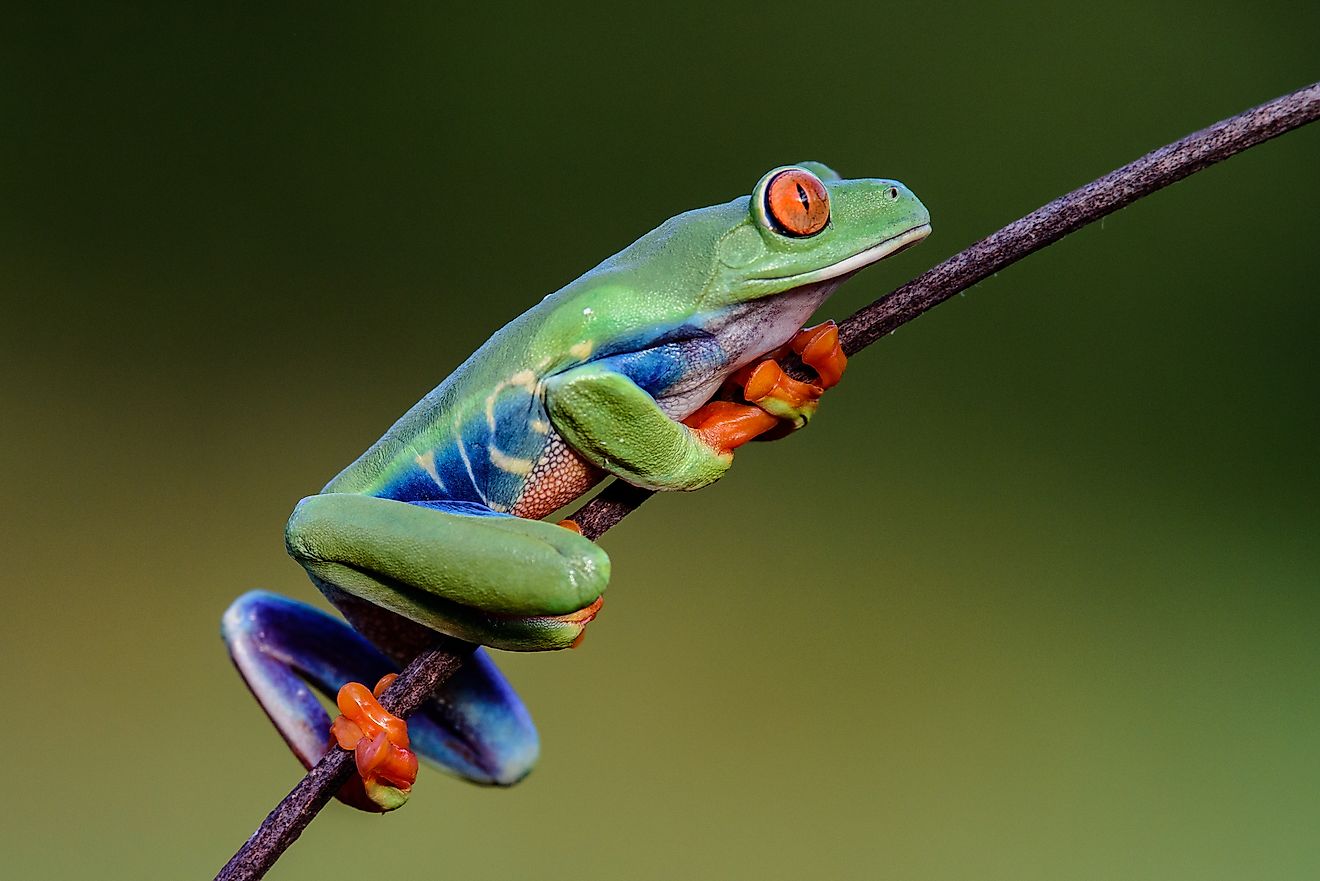
Tropical rainforests are rainforests in the tropical regions of the globe. These rainforests receive a high volume of annual rainfall, and nearly every month receives at least 60 mm rainfall. These rainforests have rich biodiversity and nearly 40% to 75% of all species on Globe inhabit these forests. Animate being of these rainforests includes the jaguar, tapir, okapi, boa constrictor, African greyness parrot, keel-billed toucan, crowned eagle, iii-toed sloth, spider monkey, large flying fox, king colobus, and more than. In this article we talk over the different layers of the tropical rainforest and some of the animals living in these layers.
21. Forest Floor
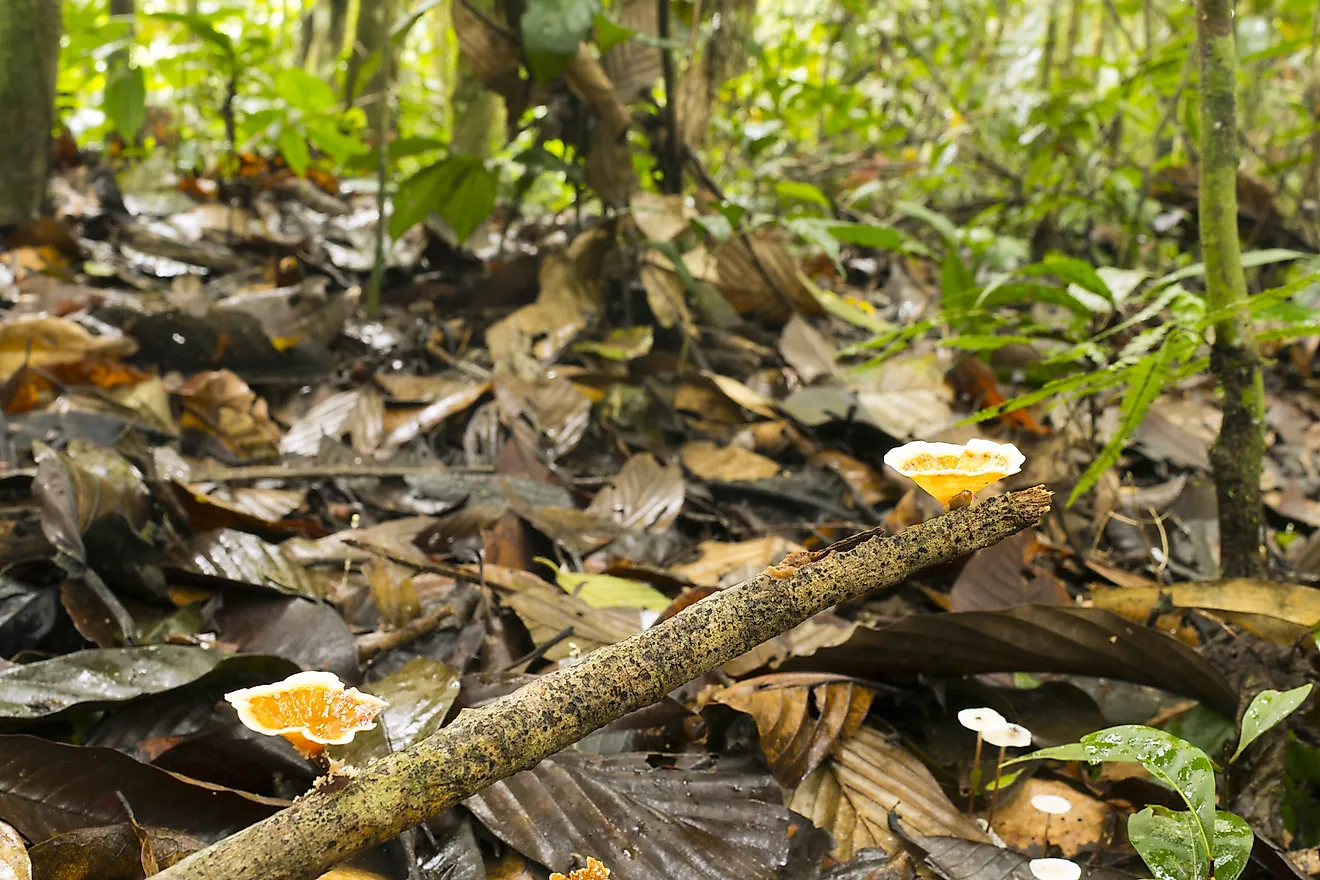
The forest floor is the rainforest'southward lesser-most layer which receives just 2% of the sunlight. Thus, plants growing hither are adjusted to the low lite weather, and the forest floor is relatively articulate of vegetation. Thus, relatively larger animals of the tropical rainforest like the okapi, the tapir, the Sumatran rhino, etc., inhabit the woods floors of rainforests. A large number of reptiles, insects, and amphibians too occur in this layer. Decaying plant and animal affair collect in the wood flooring where they are decomposed by microbes like bacteria and fungi.
20. Okapi
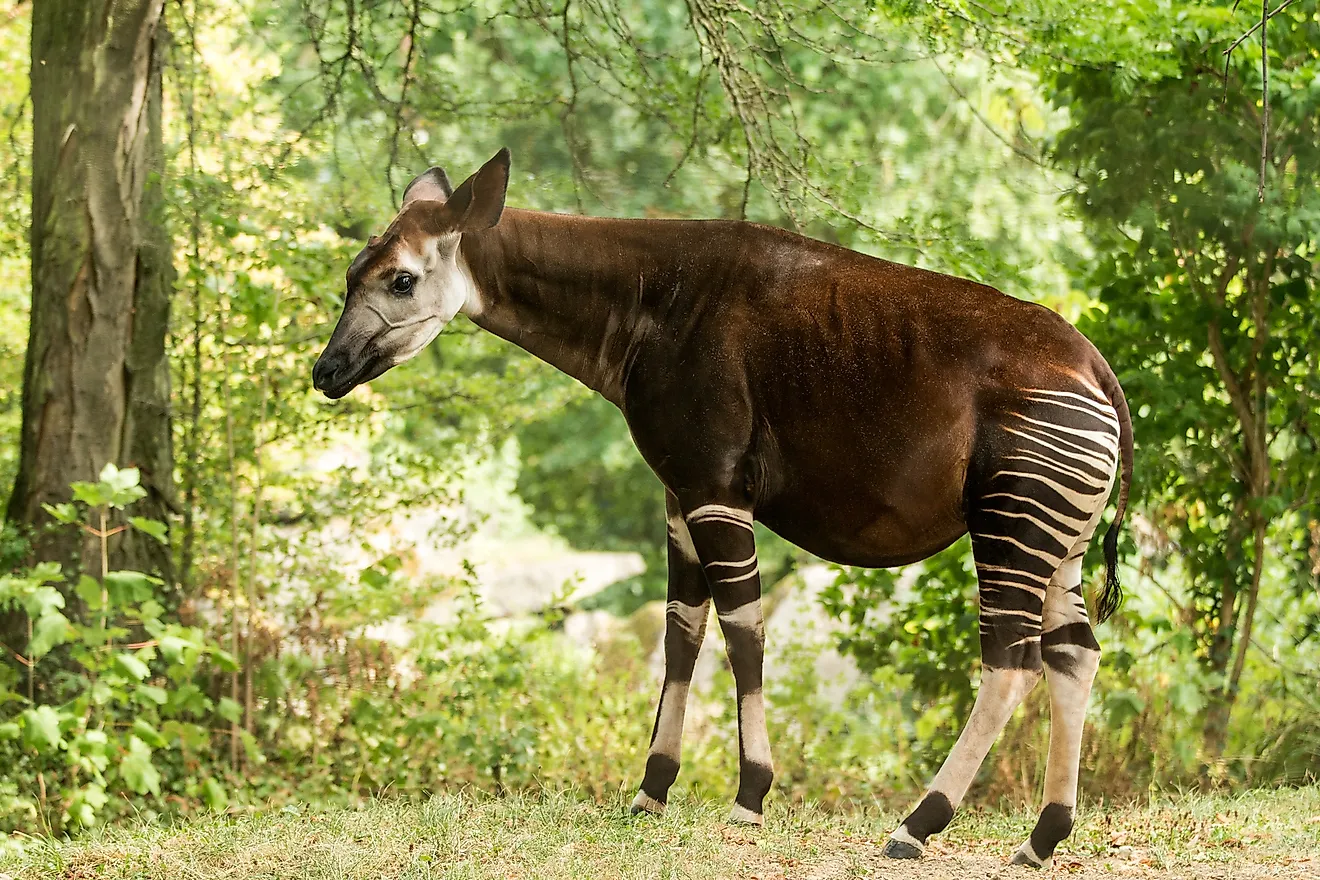
The okapi (Okapia johnstoni) is a unique mammalian species that is native to tropical forests of the Congo-kinshasa in Central Africa. Although the okapis bear distinct zebra-like markings on their limbs, they are more closely related to giraffes. Okapis are diurnal and solitary in nature. These tropical rainforest animals feed on tree leaves and buds, fruits, ferns, and fungi.
19. Tapir
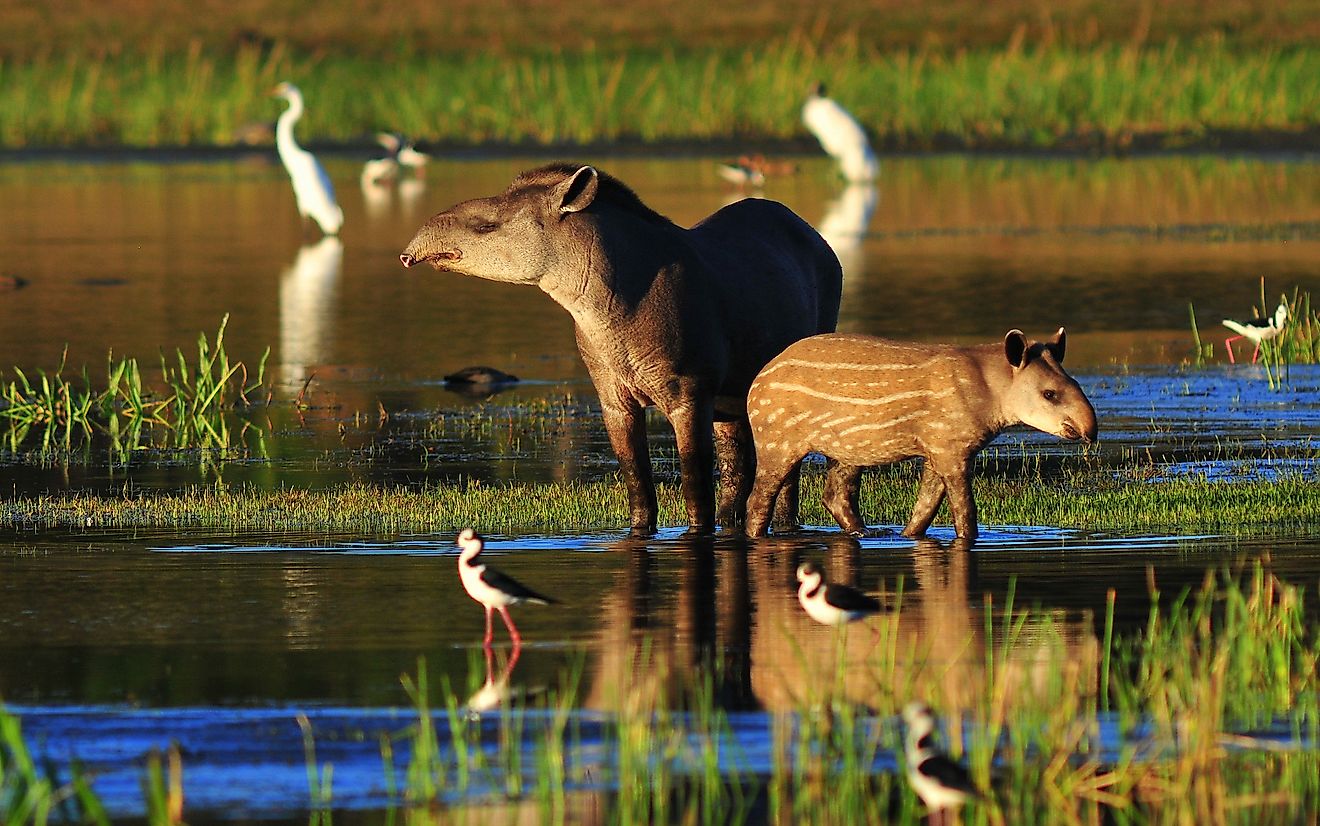
The tapir (Tapirus sp.) is a pig-like herbivorous mammal with a short, prehensile snout. These tropical rainforest animals are plant in forests of South and Cardinal America also as Southeastern Asia.
xviii. Sumatran Rhino
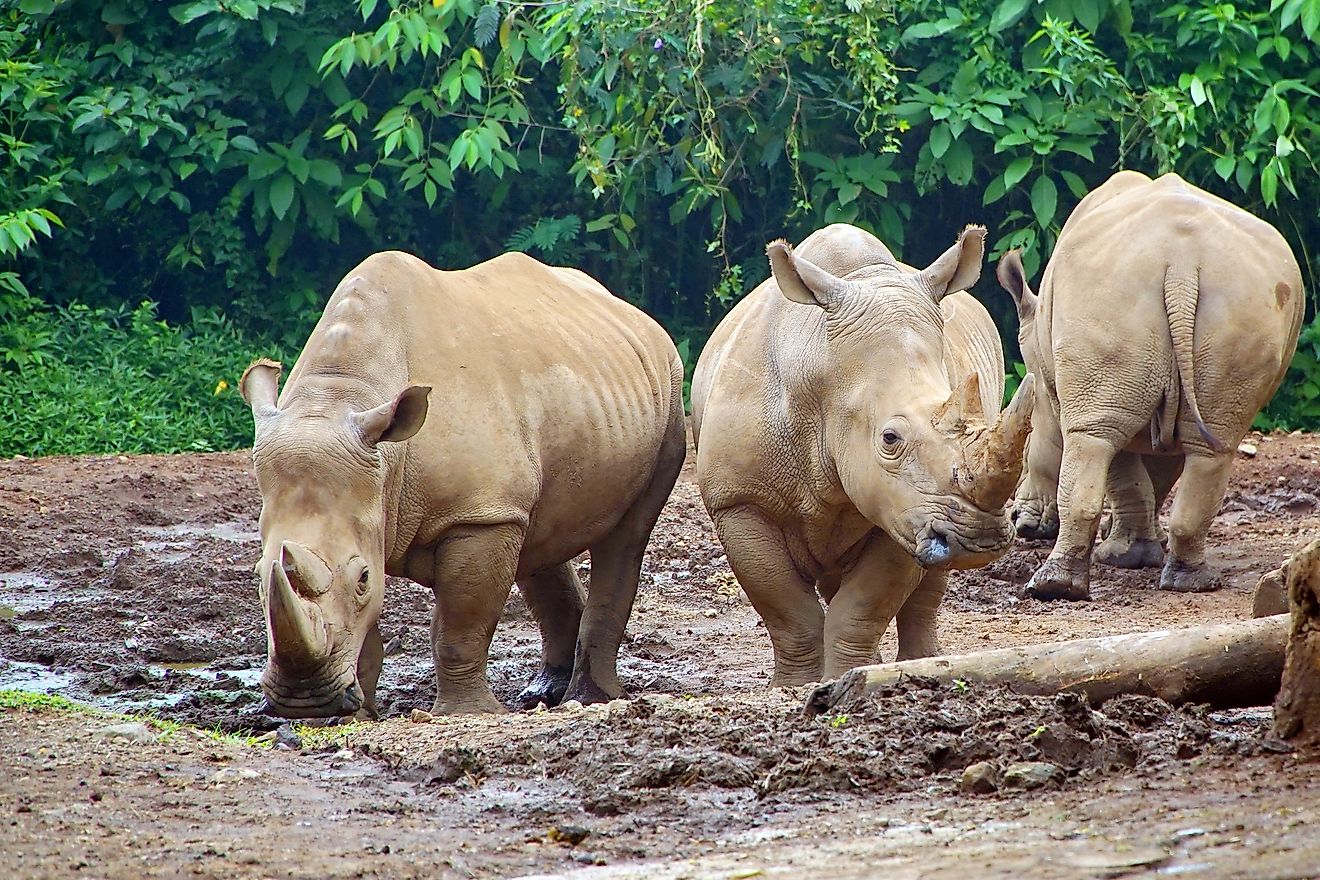
1 of the five extant rhinoceros species today, the Sumatran rhino (Dicerorhinus sumatrensis) inhabits the tropical forests of Borneo and Sumatra. It is the smallest rhino species in the world and has two horns. The Sumatran rhino is a critically endangered species as information technology has been hunted extensively for its horns which are used to prepare traditional medicines in Cathay and Vietnam.
17. Western Lowland Gorilla
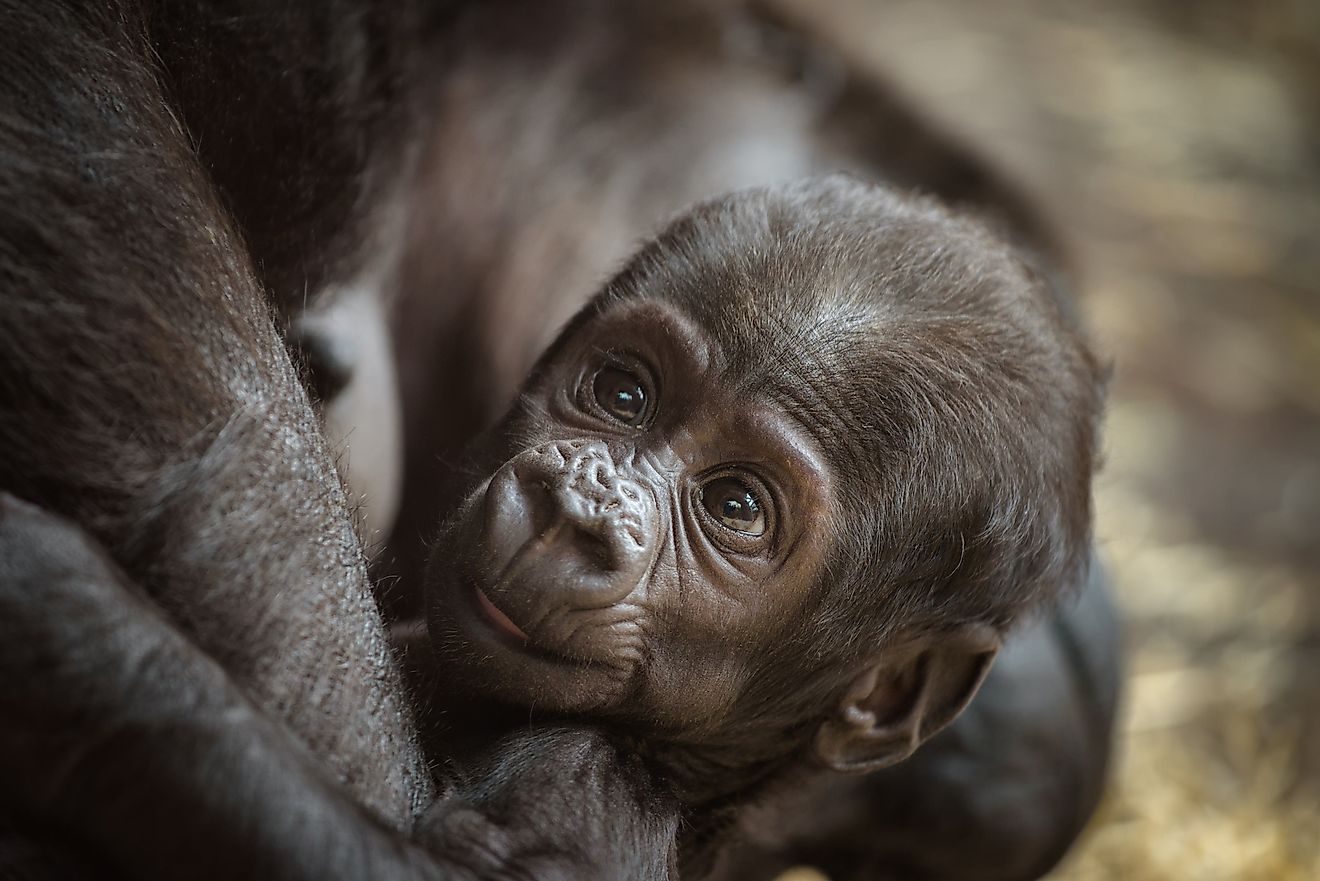
The Western lowland gorilla (Gorilla gorilla) is plant in the forests of central Africa. These animals are extremely wise and can way out tools to gather more food using natural objects. This tropical rainforest brute is today critically endangered. Hunting for bushmeat and logging in gorilla habitats are the ii primary threats to these gorillas.
16. Understory Layer
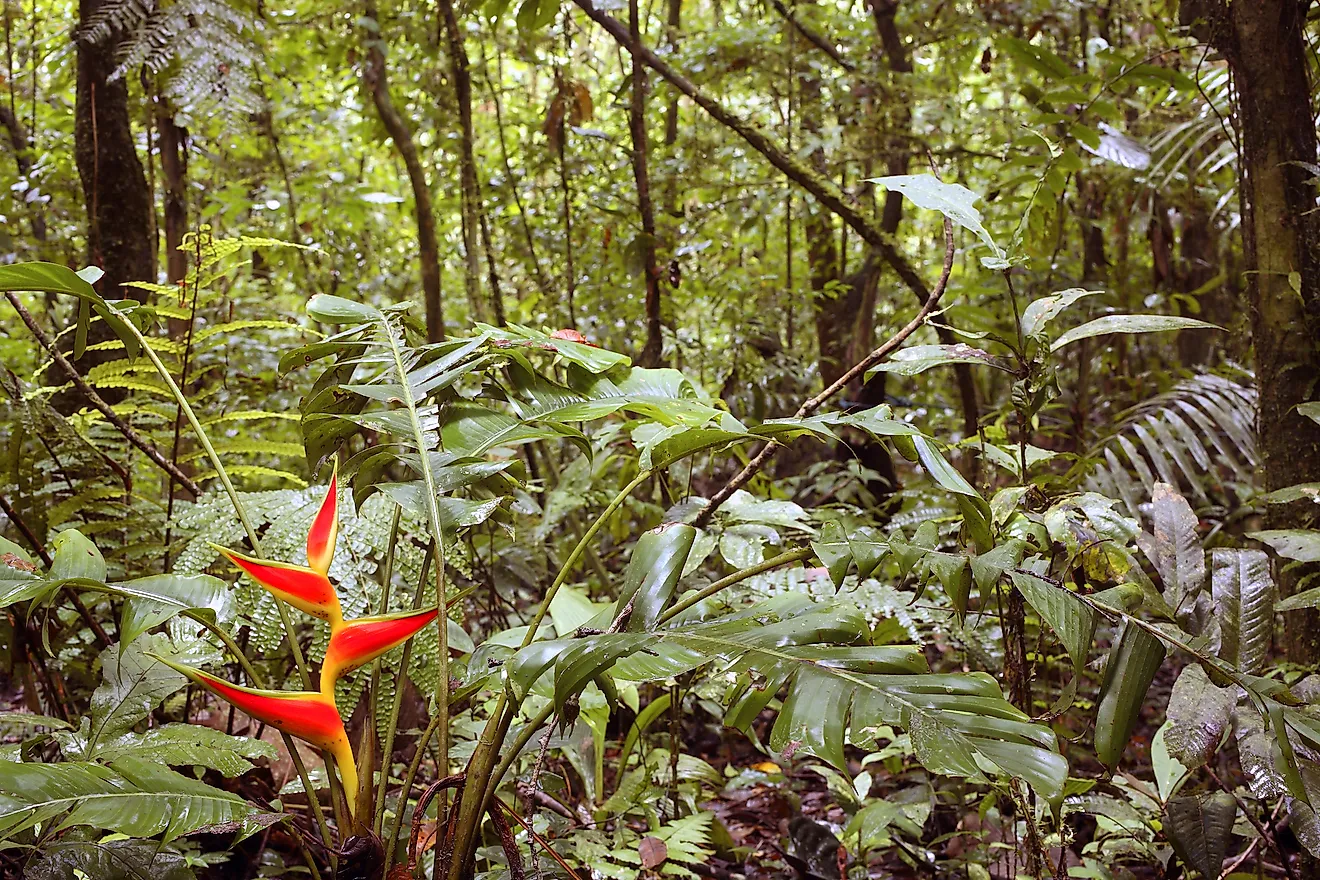
The tropical rainforest layer between the forest floor and the awning is the understory layer, and information technology receives only nearly 5% of the sunlight. A big number of small mammals, birds, reptiles, and predators like the jaguar inhabit this layer. Shade-tolerant shrubs, small trees, woody vines, and herbs comprise the vegetation of this layer. Plants growing hither seldom reach x feet in height and unremarkably have wide leaves to provide greater surface area for photosynthesis.
15. Jaguar
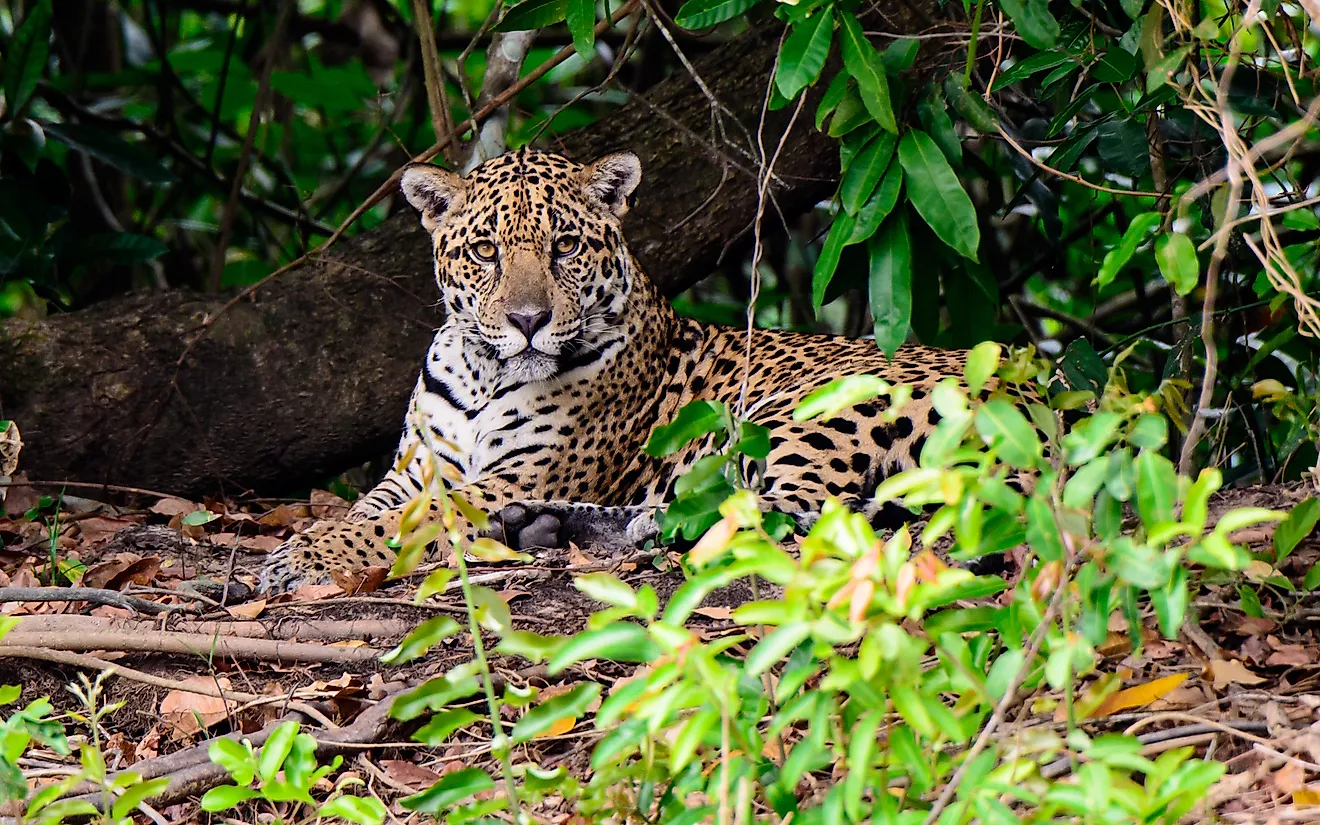
The jaguar (Panthera onca) is the biggest cat species living in the Americas and is the 3rd largest in the world after the panthera leo and the tiger. The jaguar prefers to inhabit the rainforests of the Americas and is found across much of Fundamental America and southward to northern Argentine republic and Paraguay. The range of this species also extends north into Mexico. The jaguar closely resembles the leopard simply is sturdier and larger than the latter. The jaguar is a lonely, apex predator of the ecosystem it inhabits.
xiv. Poison Dart Frog
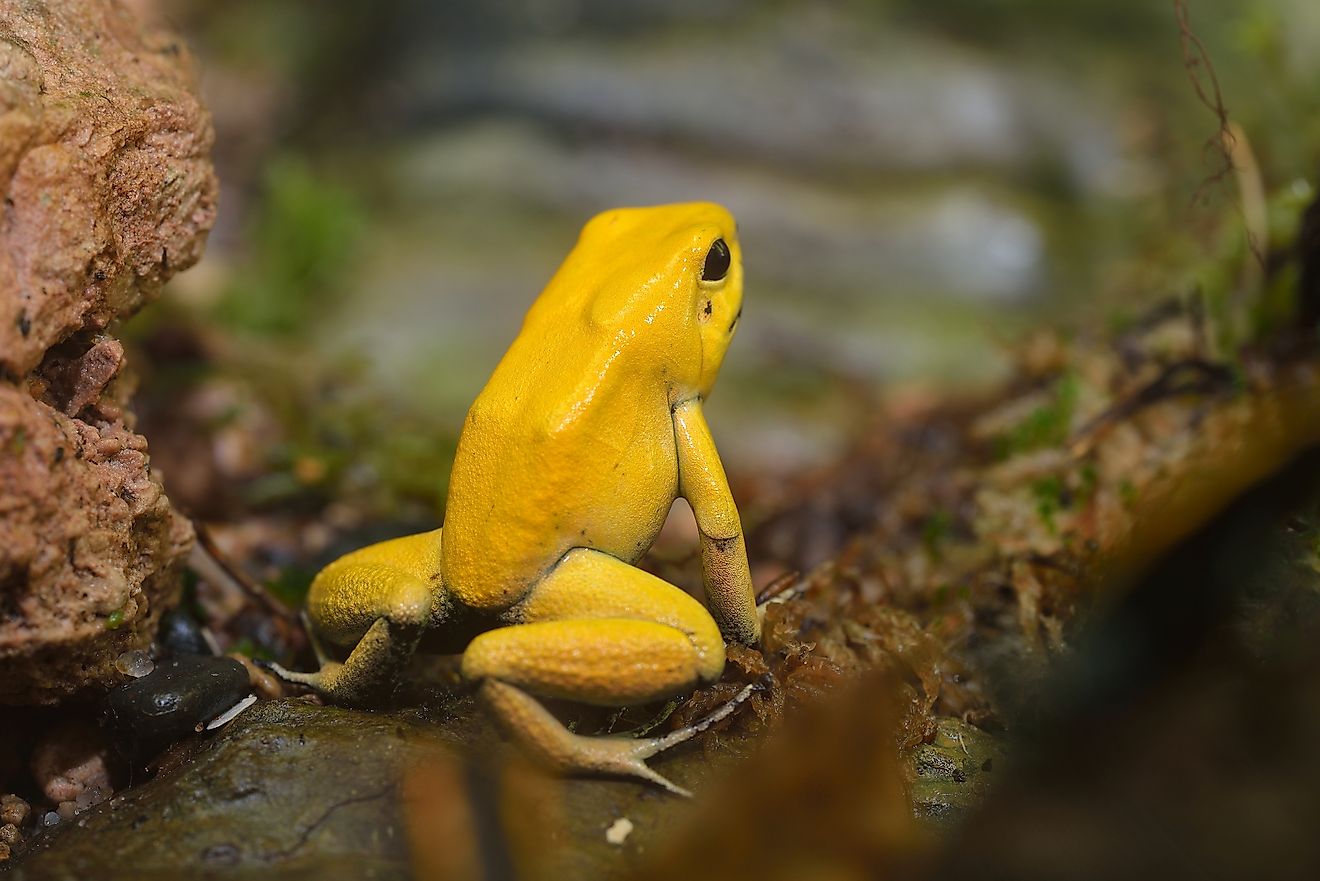
Though the proper name sounds deadly, merely virtually three species of this frog are really lethal. The gold arrow frog (Phyllobates terribilis) is the most dangerous among the 3. These frogs all possess vibrant colors of gilt, red, green, blue, and yellowish which is a tactic to ward off predators. This feature is known equally aposematic coloration.
thirteen. South-American Coati
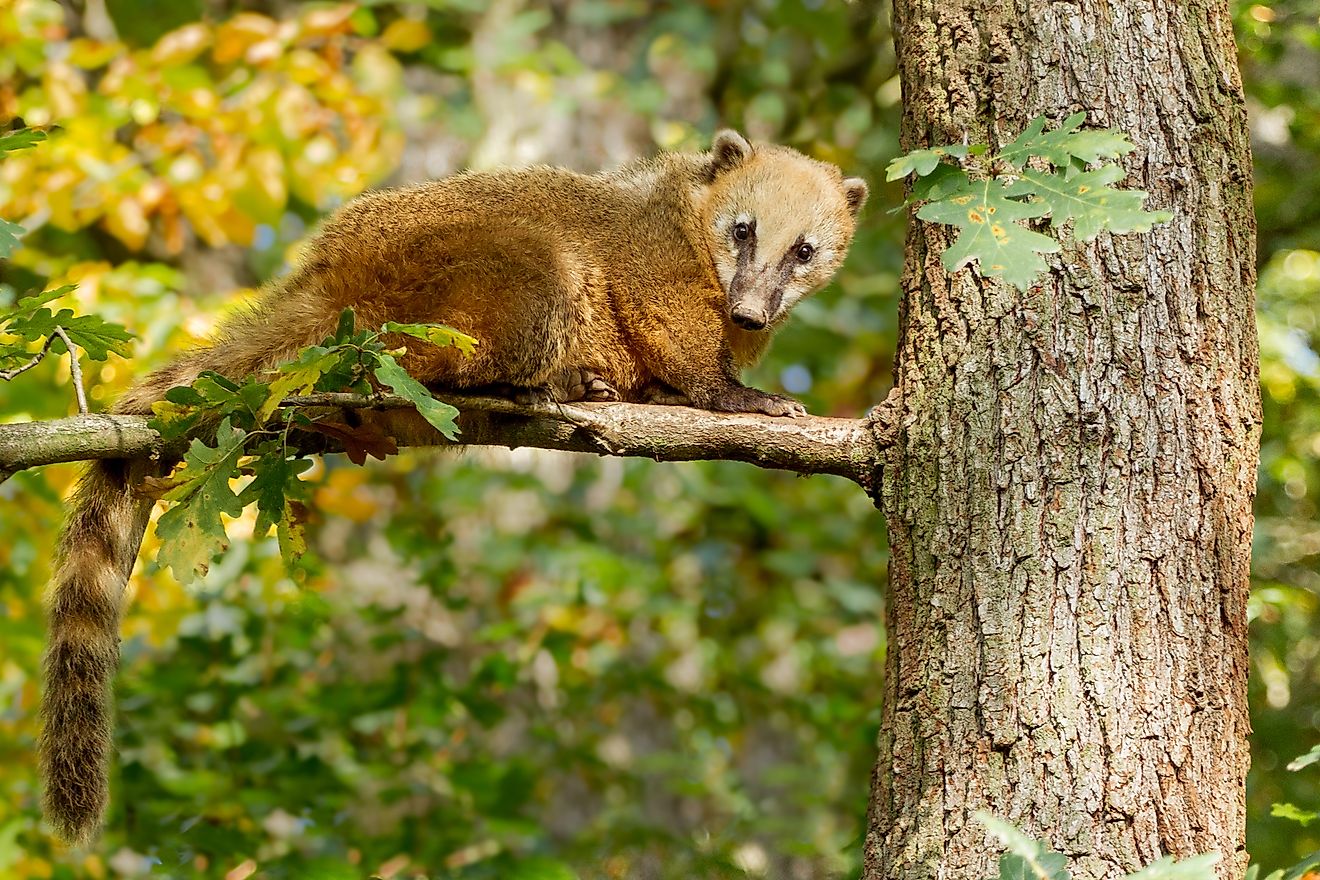
Also known as the ring-tailed coati (Nasua nasua), it is an animal that inhabits the rainforests of South America. The coatis are found in the lowland rainforests due east of the Andes from Colombia to the Guianas to Uruguay and northern Argentina.
12. Boa Constrictor
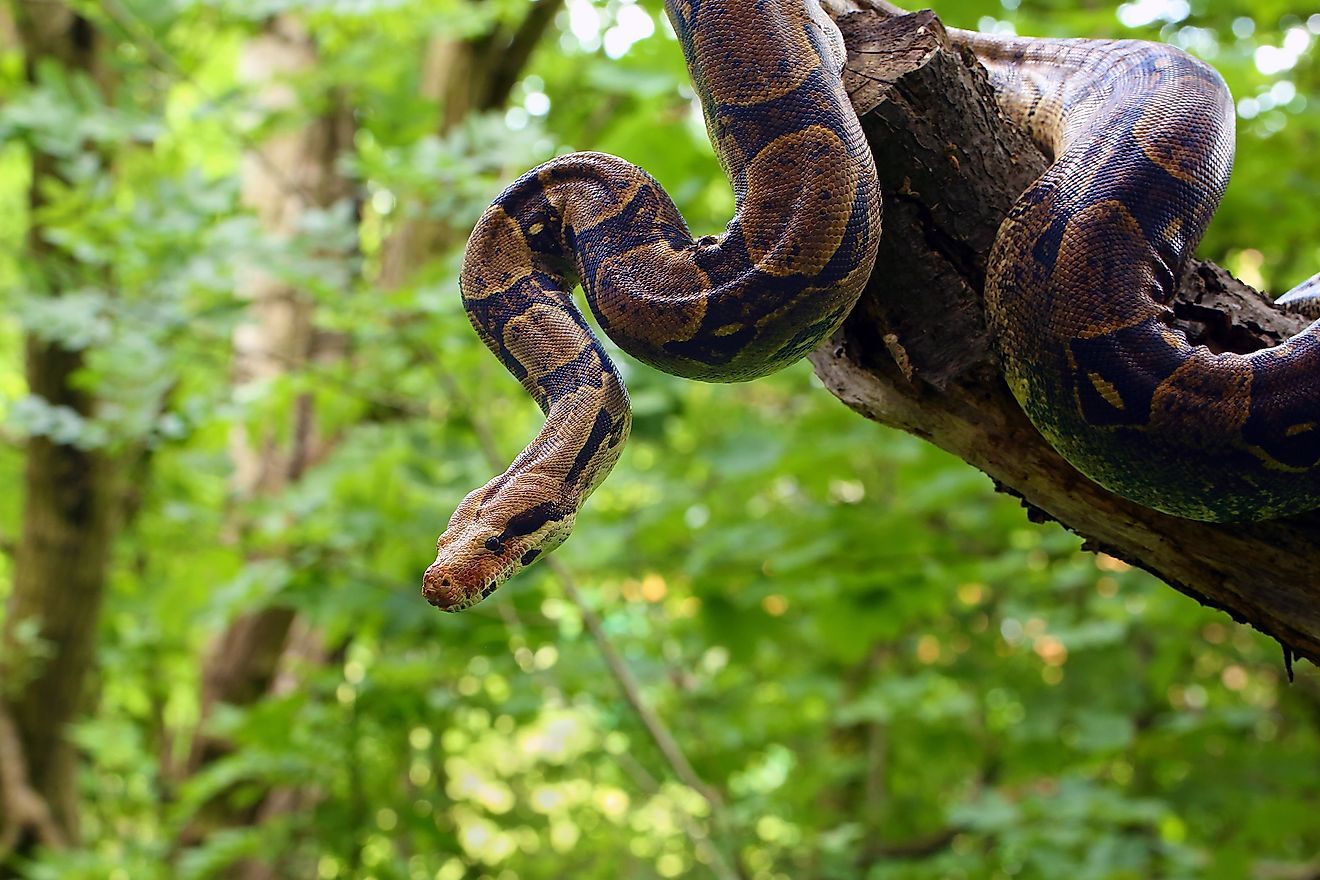
The boa constrictor (Boa constrictor) is a massive serpent that is found in forests throughout the Americas and likewise the Caribbean islands. Though the boa constrictor is found in a broad variety of habitats, it prefers the rainforests in its range due to the high humidity and temperatures of such habitat. Too, rainforests provide sufficient cover and enough of prey options to these snakes.
eleven. Canopy Layer
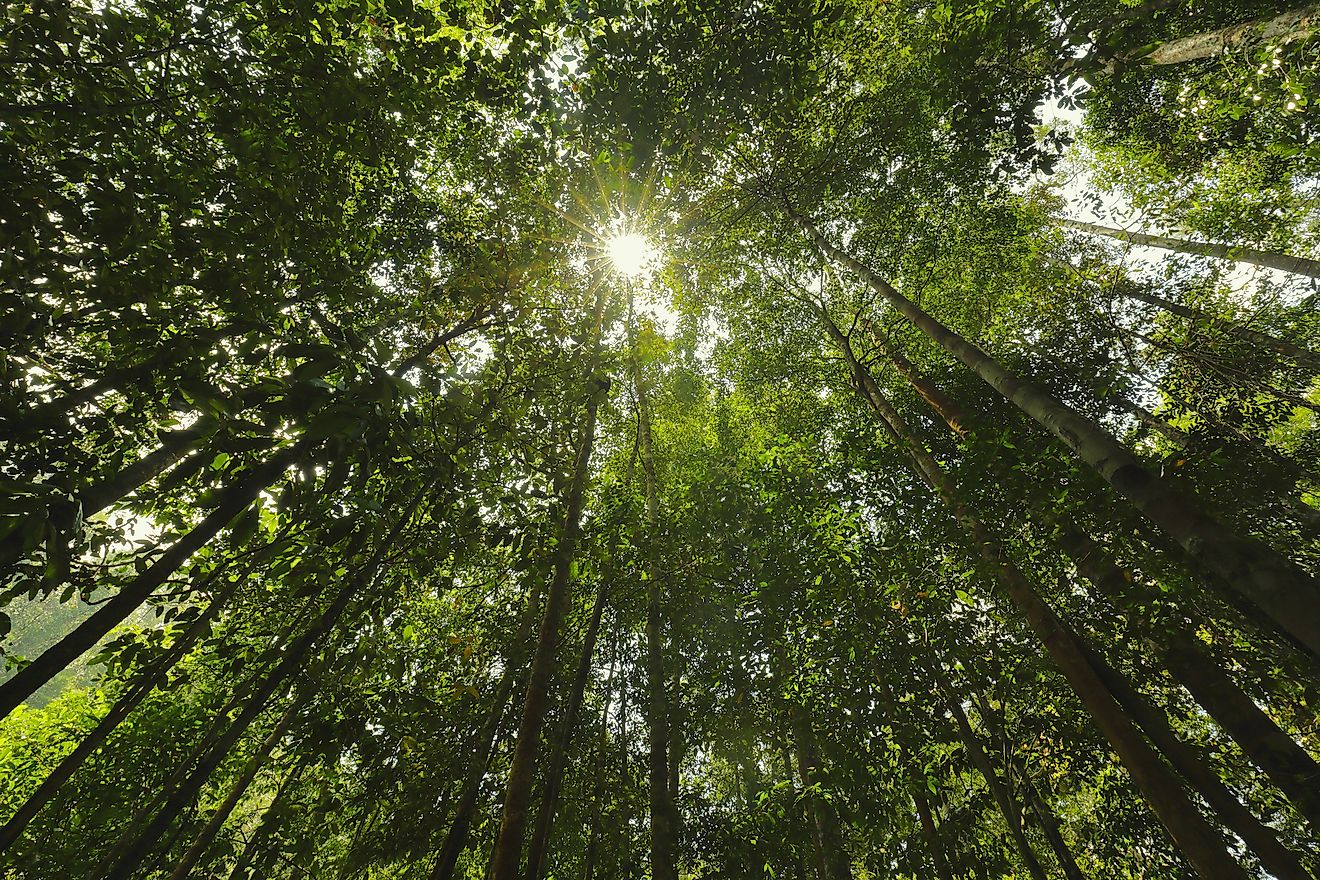
The canopy is the most distinctive layer of the rainforest forming a roof over the wood floor and the understory layer. A bulk of the largest copse of the rainforest, growing upwards to 30 to 45 yard in height, are found in this layer. Broad-leaved evergreen copse boss the forest canopy, and a rich flora of orchids, mosses, lichens, bromeliads, etc., are supported by the awning layer making information technology the densest part of the rainforest. Over 20 million arthropod species and a big number of avians inhabit this woods layer. Mammals, invertebrates, and reptiles are likewise found here.
10. African Gray Parrot
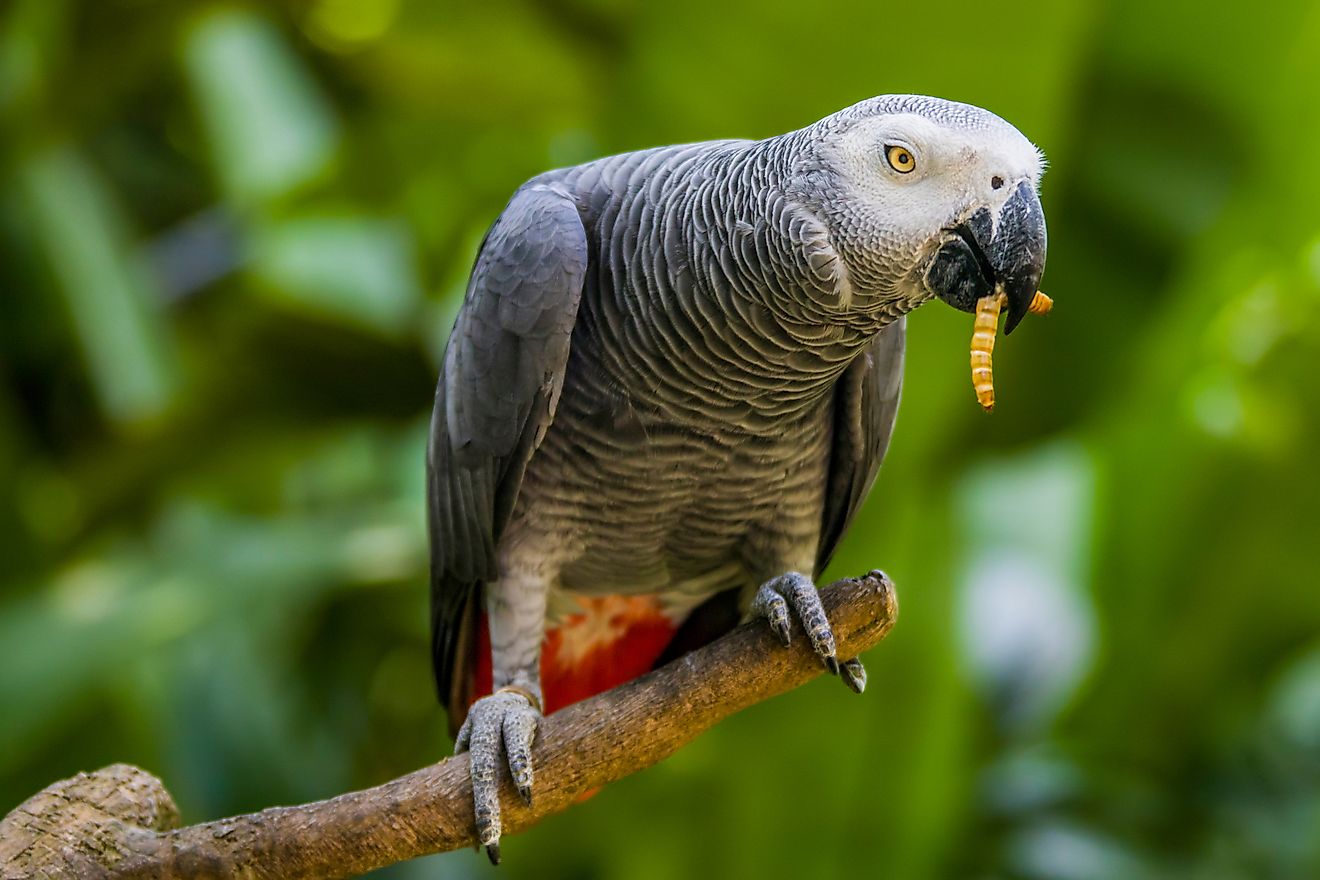
African gray parrots are medium-sized, gray, black-billed birds institute in equatorial Africa. The birds are currently classified as vulnerable and number between 120,100 and 259,000.
9. Keel-Billed Toucan
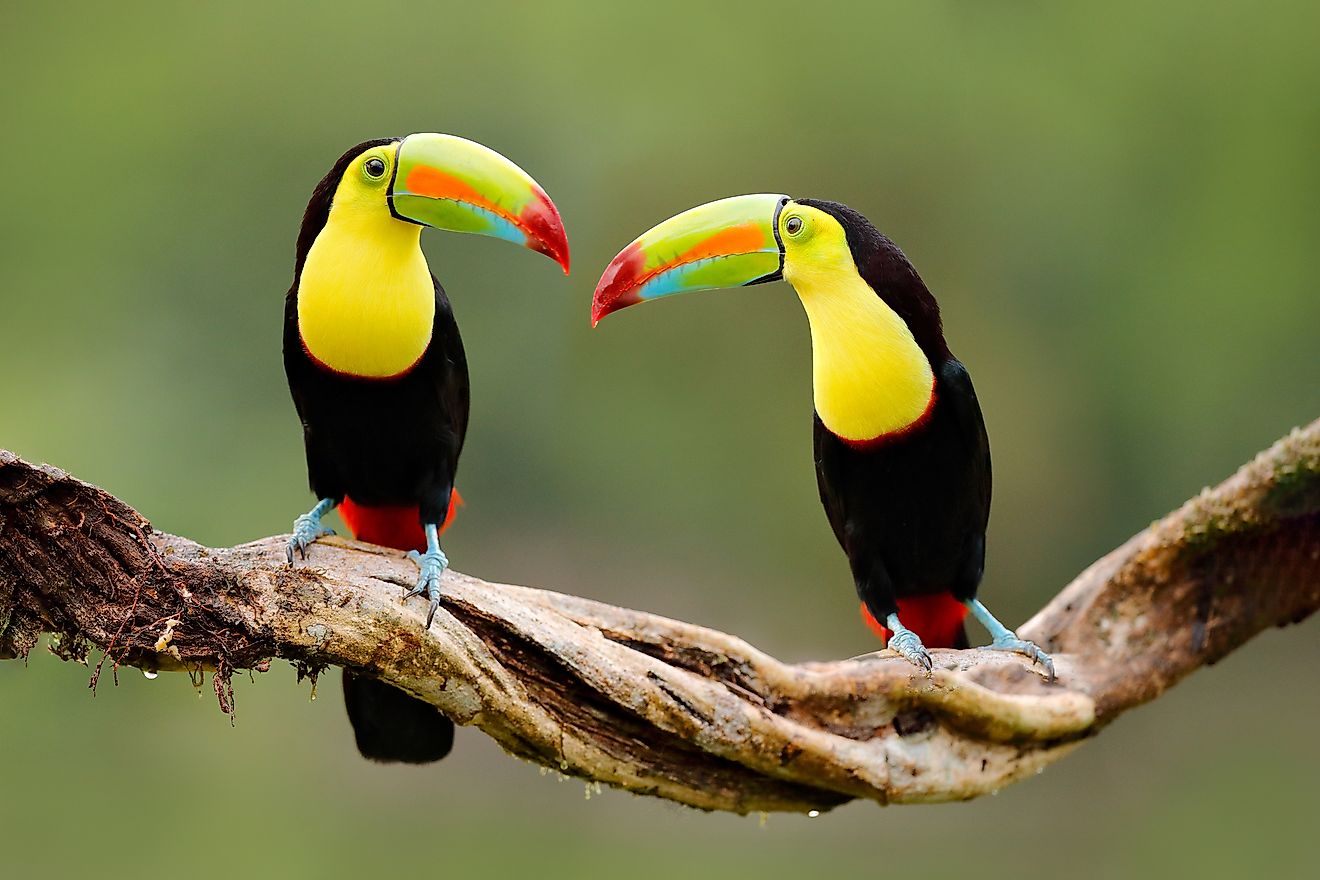
The keel billed toucan (Ramphastos sulfuratus) is found in the rainforests of Latin America. In these forests, it roosts in holes of copse in the rainforest canopy layer, often with other toucans. The crowded roosting places demand that the toucans tuck their beaks and tails nether their bodies to save space.
eight. Spider Monkey
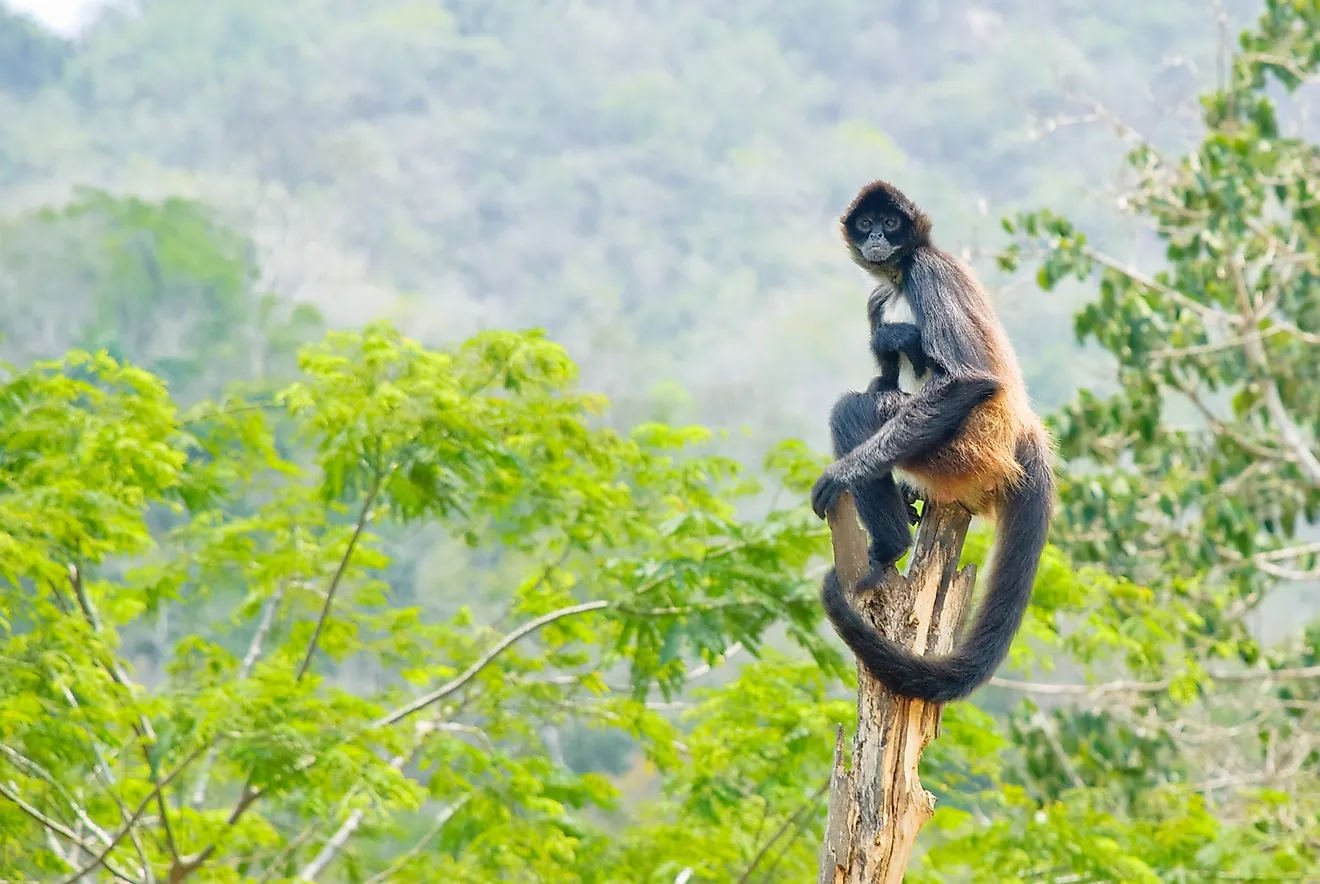
Spider monkeys are institute in the Central and South American rainforests from Mexico to Brazil. All the vii species of these monkeys are threatened to some extent. These highly social creatures alive in big groups of nigh 35 individuals and split into smaller groups to feed during the day.
7. 3-toed Sloth
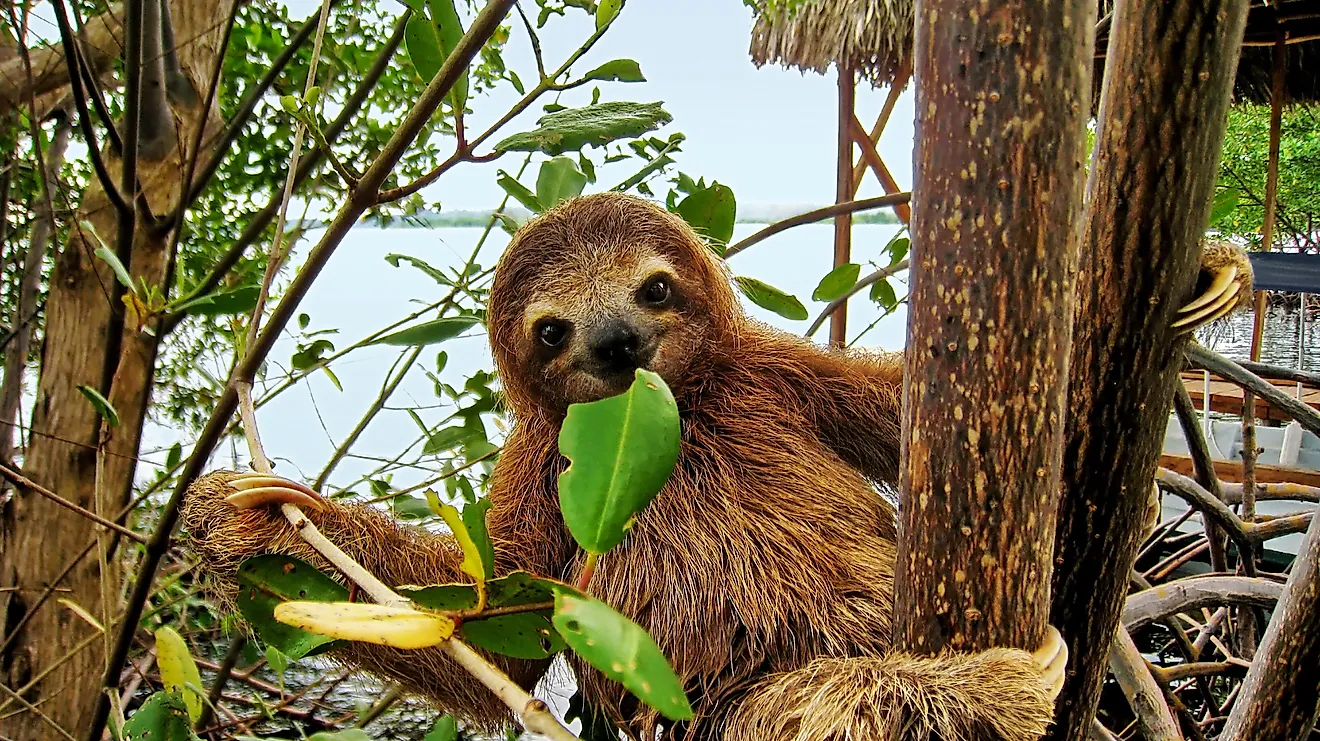
The iii-toed sloths are arboreal mammals found in S and Primal America. These tropical rainforest animals are named and so for their irksome gait which is an adaptation to conserve energy. These sloths have a size of a small dog or a big cat and three clawed toes on each limb.
6. Great Hornbill
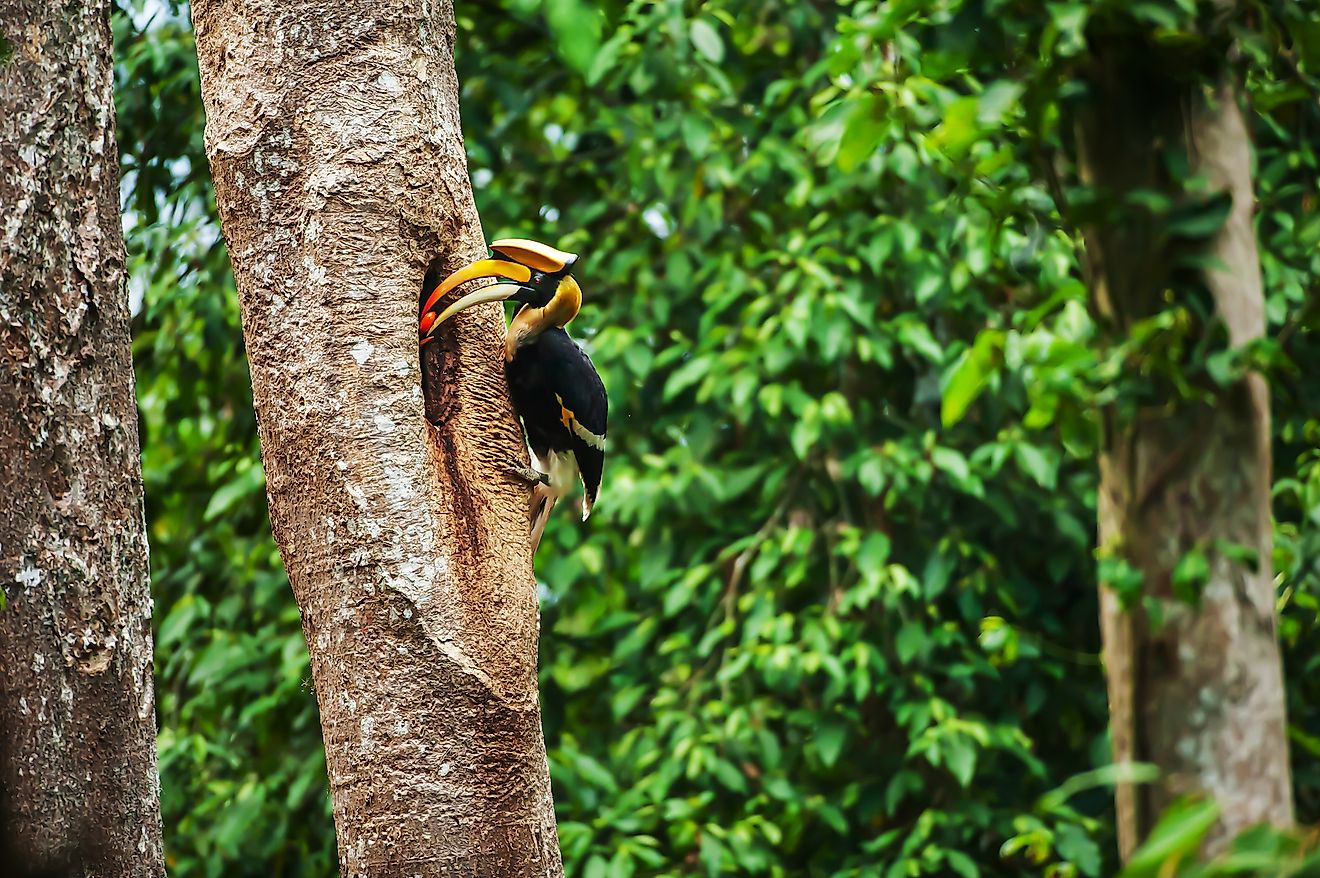
The nifty hornbill or Buceros bicornis is a vulnerable species found in forests in parts of the Indian subcontinent and Southeast Asia. Information technology is one of the largest species of the hornbill family. Predominantly frugivorous, the bird also feeds on pocket-size mammals, birds, and reptiles occasionally. It can live for around 50 years in captivity and features prominently in the rituals and cultures of locals in areas where information technology is found.
5. Kinkajou
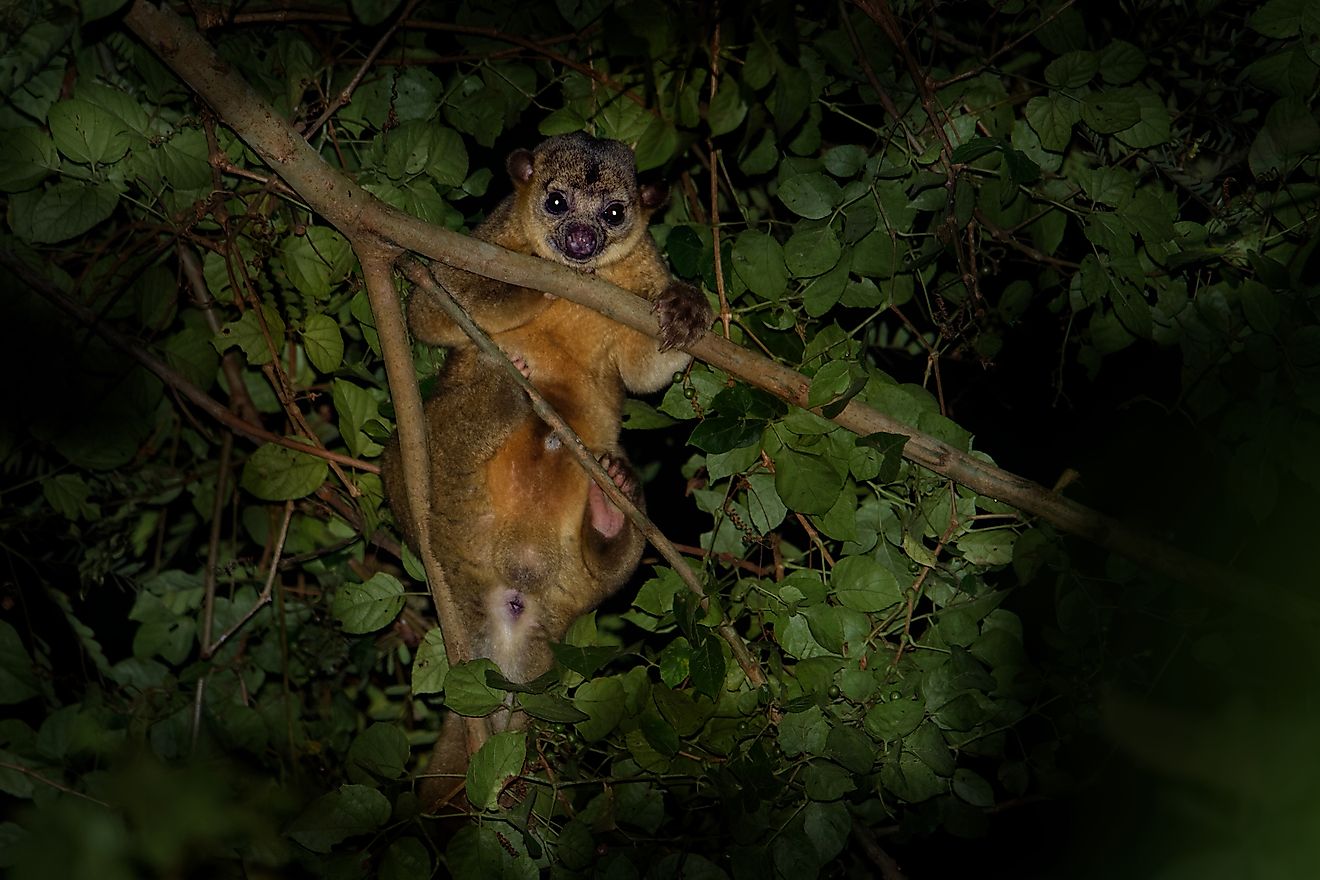
The kinkajou is one of the animals in the tropical rainforest which though mistaken for monkeys or ferrets, are related to none of them. The kinkajou is native to the Central and South American rainforests. These animals are nocturnal, frugivorous, and arboreal in nature. Unfortunately, they are hunted for the pet merchandise and for their fur.
4. Emergent Layer
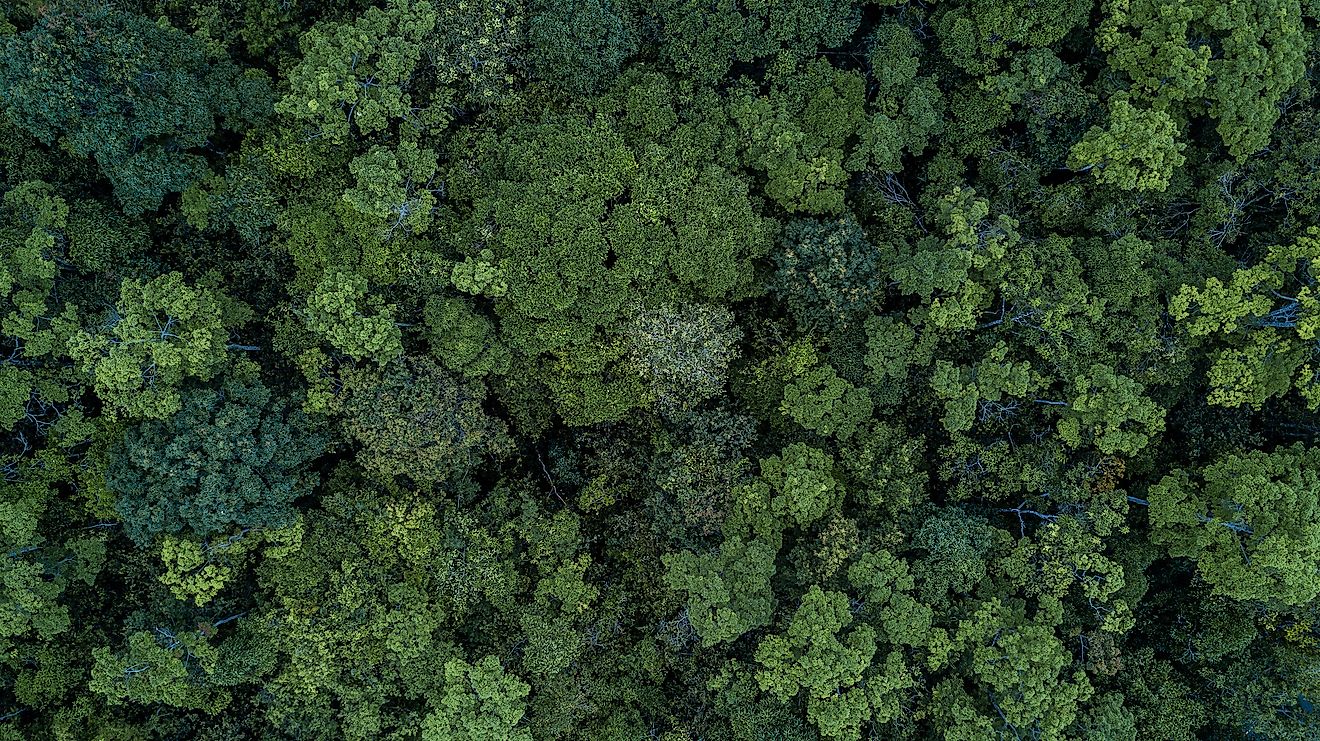
The emergent layer has few behemothic trees that attain heights upward to 45 to 55 m or even higher. Thus, these copse appear to emerge over the canopy layer. The trees of this layer are well adapted to withstand the stiff winds and hot temperatures in a higher place the canopy. When such emergent layer trees collapse, it forms gaps in the canopy, allowing sunlight to reach the lower layers of the rainforest.
3. Crowned Eagle
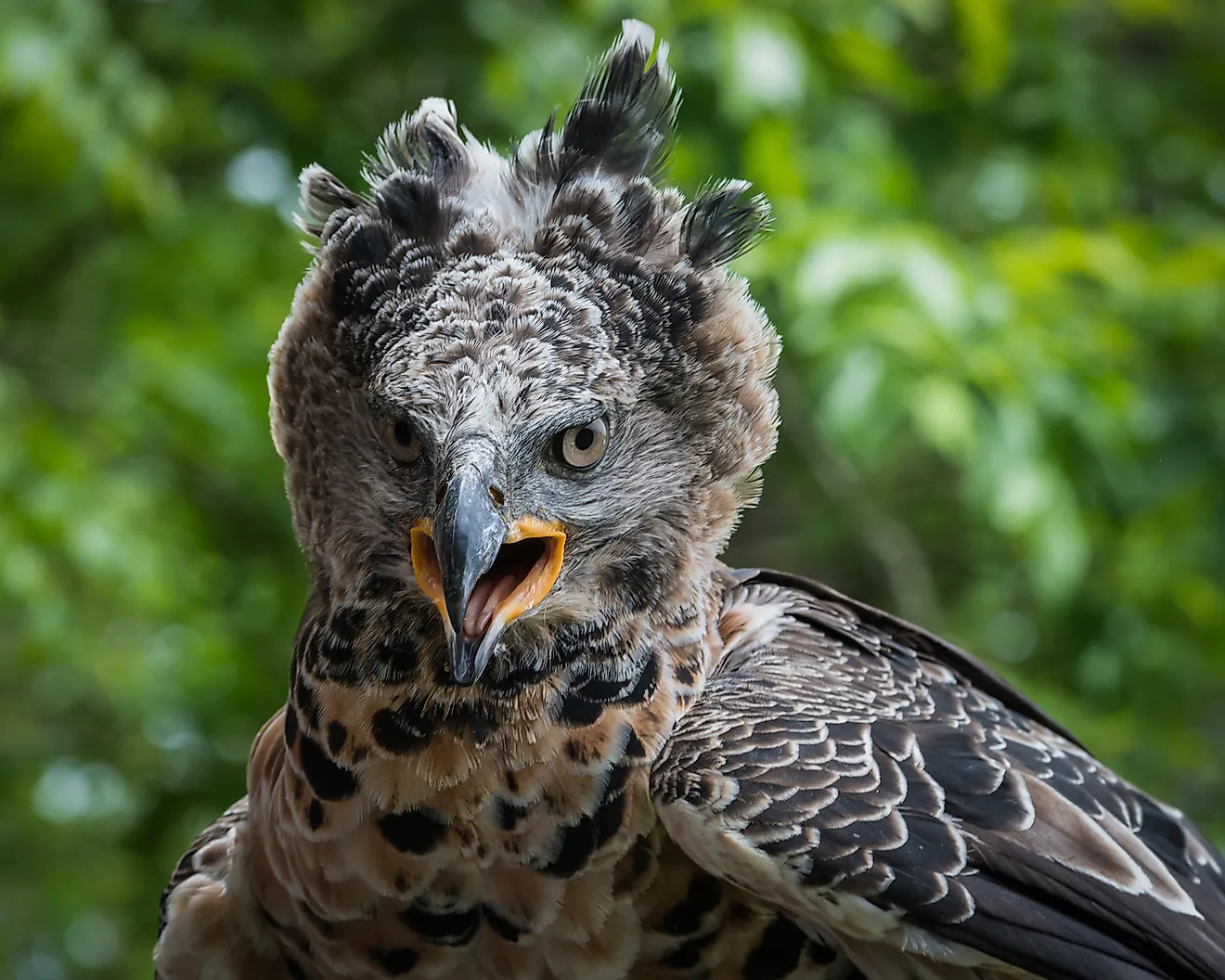
The crowned hawkeye (Stephanoaetus coronatus) is a massive and ferocious bird of prey that is found in the emergent layer of the rainforests. The hawkeye primarily feeds on mammalian prey like small ungulates, pocket-sized primates, birds, and lizards. It is one of the most powerful eagles of Africa but is at present classified as Near Threatened by IUCN due to the big-scale destruction of its habitat.
2. Male monarch Colobus
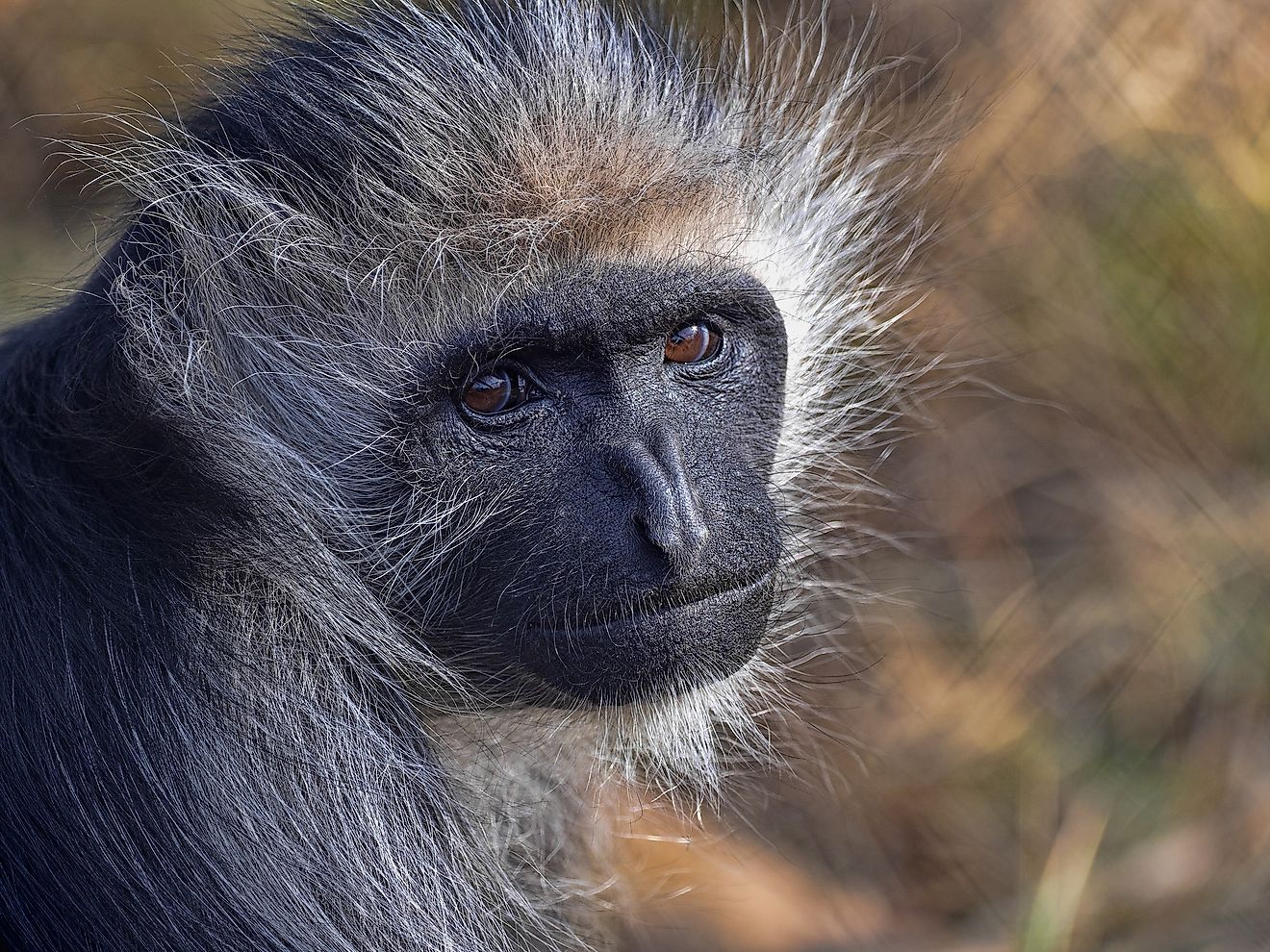
The king colobus (Colobus polykomos) is one of the animals of the tropical rainforest that is constitute in the rainforests of Africa in the countries of Senegal, Liberia, Guinea, Sierra Leone, Guinea-Bissau, and the Ivory Declension. The king colobus lives in the emergent layer of these forests simply eats primarily on the footing. three to 4 females and ane to three males of this primate species alive together in one grouping.
i. Large Flight Flim-flam
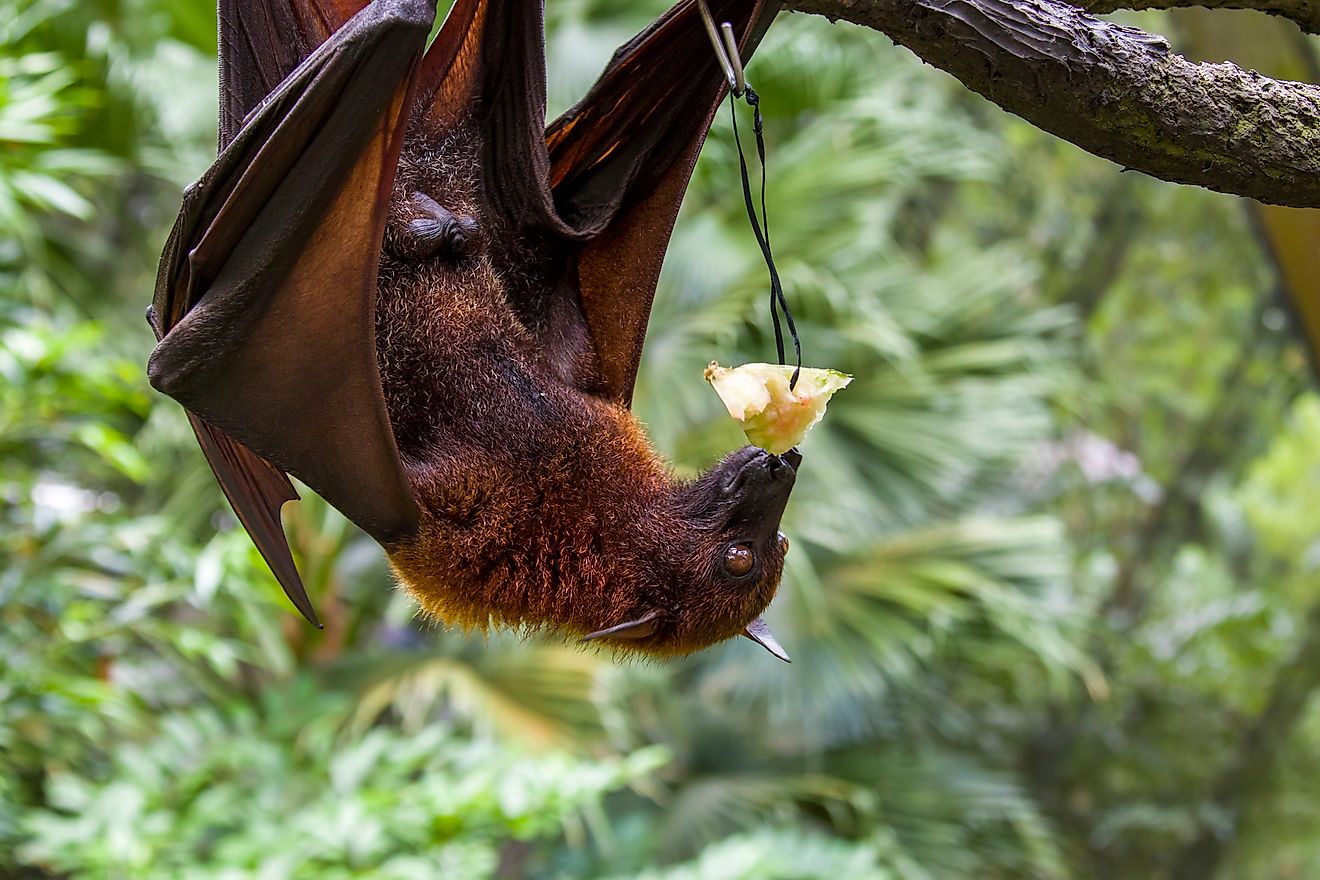
The large flying fox (Pteropus vampyrus) is ane of the largest species of bats in the globe. Information technology lives in the canopy layer of the rainforests where it feeds exclusively on nectar, fruits, and flowers. Though these bats lack the power to echolocate, it uses its dandy eyesight to detect nutrient sources.
Source: https://www.worldatlas.com/articles/tropical-rainforest-animals.html
Posted by: whitesains1990.blogspot.com

0 Response to "What Animals Eat Moss In The Rainforest"
Post a Comment